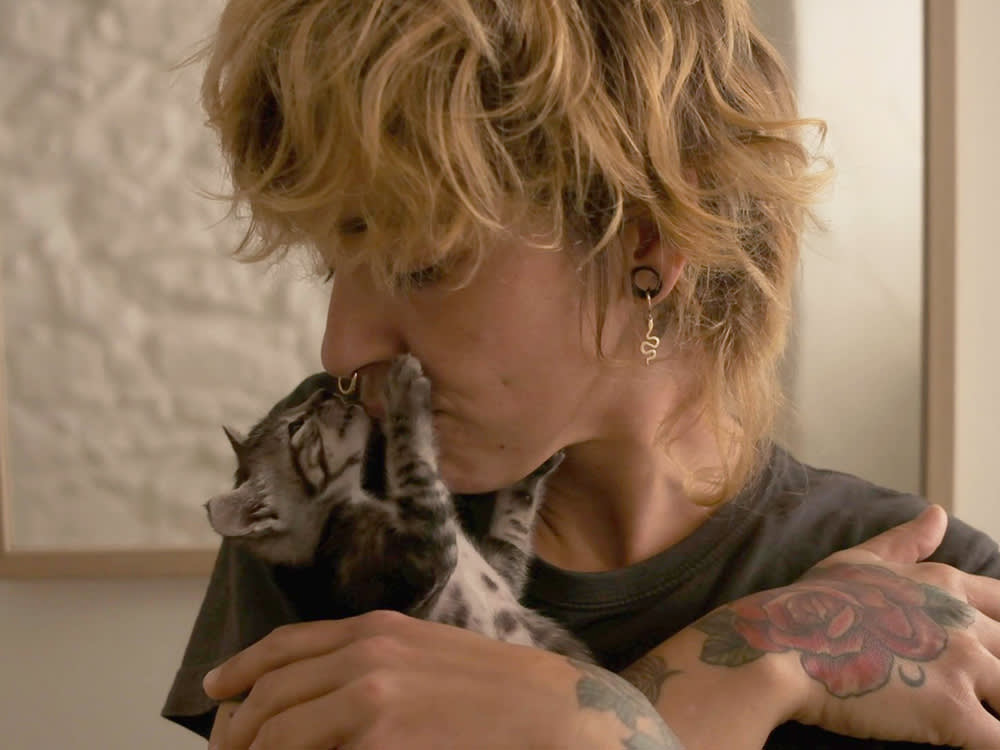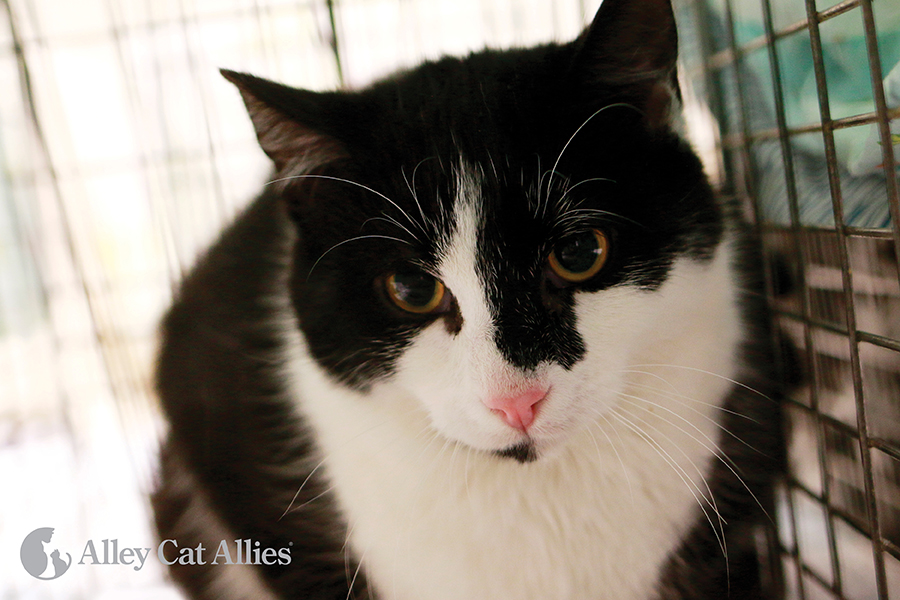To adopt a stray cat, take it to a vet to check for any health issues before bringing it indoors. Adopting a stray cat can be a rewarding experience for both the cat and the owner.
Stray cats are often in dire need of a loving home and may have unique personalities and quirks that make them great pets. However, before you bring a stray cat into your home, it’s important to take it to a veterinarian to ensure it doesn’t have any underlying health issues.
This is also a good opportunity to get the cat tested for feline diseases and parasites. We’ll go over some do’s and don’ts of adopting a stray cat and provide tips on how to make the transition into your home as smooth as possible.

Credit: www.thewildest.com
Part 1: Preparing to Adopt
Assessing Your Readiness
Before embarking on the journey to adopt a stray cat, it’s crucial to evaluate both your living space and personal readiness. Ensure your home is safe and cat-friendly, with no open windows or toxic plants that could pose risks. Also, consider your lifestyle: Do you have the time and dedication to devote to a pet that may require extra care and attention?
The Financial Commitment: What to Expect
Understand that adopting a cat comes with both initial and ongoing costs. Initial expenses include vaccinations, neutering, and any necessary medical treatment. Long-term costs encompass food, litter, regular vet check-ups, and emergency healthcare. Being financially prepared for these responsibilities is essential.
Understanding Stray Cats
The Life of a Stray: Challenges and Health Concerns
Stray cats often face various health issues, from minor concerns like fleas and ticks to more severe conditions such as respiratory infections or injuries. Be prepared to address these health challenges, which will likely require immediate and possibly ongoing veterinary care.
Stray vs. Feral: Knowing the Difference
It’s important to distinguish between stray and feral cats. Stray cats have had human contact and can readjust to living with people. In contrast, feral cats are wild and not accustomed to humans. Understanding this difference can help you set realistic expectations about the behavior and adaptability of the cat you’re considering adopting.
Part 2: The Adoption Process
Where to Find Stray Cats in Need of Homes
Look in your community, shelters, or through rescue organizations to find stray cats available for adoption. Social media and local community boards can also be valuable resources for finding animals in need.
How to Safely Approach a Stray Cat
Approaching a stray cat requires patience and caution. Speak softly and move slowly to avoid frightening them. Offering food can help gain their trust, but it’s crucial to respect their space and allow them to come to you.
Health and Safety
Initial Health Assessment: What to Look For
Upon finding a stray you’re interested in adopting, look for signs of ill health, such as clear eyes, a clean coat, and normal breathing patterns. These signs can indicate the cat is relatively healthy, but a vet assessment is still necessary.
The Importance of Vet Visits Before Bringing Them Home
Before officially adopting the cat, a thorough vet check-up is crucial. This visit can identify any underlying health issues, ensure the cat is vaccinated, and discuss spaying or neutering. It’s also an excellent opportunity to establish a relationship with a vet you trust.
Legal Considerations
Checking for Microchips: The First Step in Responsible Adoption
Always check for a microchip to ensure the stray cat isn’t a lost pet. This can be done at any veterinary office or animal shelter and is a crucial step in responsible adoption.
Navigating Local Laws and Regulations on Stray Animals
Familiarize yourself with local laws regarding stray and feral animals. Some areas have specific regulations or require a waiting period before you can legally adopt a stray. Knowing these laws can help you avoid legal issues and ensure your adoption process is smooth and compliant.

Credit: www.alleycat.org
Creating a Welcoming Environment
Setting Up a Safe Space in Your Home
Creating a safe space for your stray cat is pivotal as it transitions into its new environment. Choose a quiet room away from the hustle and bustle of the household, where your cat can retreat and feel secure. Equip the room with a cozy bed, scratching posts, and hideaways. This sanctuary will help your cat feel protected and allow it to gradually acclimatize to its new surroundings at its own pace.
Essential Supplies for Your New Cat
To ensure your stray cat’s smooth transition into its new home, you will need to prepare some essential supplies. These include a high-quality cat food tailored to its nutritional needs, water bowls, litter boxes, toys, and grooming tools. Providing these essentials from the get-go will help your cat feel comfortable and cared for.
The First Days
Introducing Your Stray Cat to Their New Home
Introducing your stray cat to its new home requires patience and understanding. Start by allowing the cat to explore its safe space for a few days without too much direct interaction. Gradually introduce yourself with gentle talk and offer treats to build trust. Ensure the cat knows where its food, water, and litter box are located.
Establishing a Feeding Routine and Diet Plan
A consistent feeding routine and a balanced diet are crucial for your stray cat’s health. Establish fixed feeding times and stick to a diet that meets your cat’s nutritional needs, considering its age, health, and energy levels. Consult with a veterinarian for diet recommendations to ensure your cat receives all the necessary nutrients.
Socialization and Training
Socializing Your Stray Cat with Other Pets and Family Members
Once your stray cat feels comfortable in its safe space, it’s time to start the socialization process with other pets and family members. Introduce them gradually, in controlled environments, to prevent any stress or aggression. Ensure all interactions are positive and reward your cat for calm behavior to reinforce good social skills.
Litter Training and Behavioral Guidance
Litter training is typically intuitive for cats, but strays might need a refresher. Place the litter box in an accessible, quiet area and gently guide your cat to it after meals and naps. Be patient and consistent with behavioral guidance, using positive reinforcement to encourage good habits and discourage unwanted behaviors.
Long-Term Care and Considerations
Scheduling Regular Vet Visits
Regular veterinary visits are essential for maintaining your stray cat’s health. Schedule check-ups at least once a year for preventive care and vaccinations. These visits are crucial for early detection and treatment of any health issues.
Recognizing Signs of Illness or Distress
Being vigilant about your cat’s health involves recognizing signs of illness or distress. Look out for changes in appetite, behavior, or litter box usage. Early detection is key to addressing health issues promptly, so consult your veterinarian if you notice anything unusual.
Behavioral Issues
Addressing Common Behavioral Issues in Former Strays
Former strays may exhibit behavioral issues such as aggression, fearfulness, or marking. Address these behaviors by understanding their root causes and consulting with a vet or a cat behaviorist. Patience, positive reinforcement, and sometimes professional help are vital in managing and resolving these issues.
When to Seek Help from a Professional
If behavioral issues persist despite your efforts, it’s important to seek help from a professional. A veterinarian or a certified animal behaviorist can provide tailored advice and treatment plans for your cat’s specific needs, ensuring a harmonious household.
Bonding and Emotional Support
Building Trust with Your Stray Cat
Building trust with a stray cat is a gradual process that requires time, patience, and consistent gentle interactions. Spend quality time with your cat daily, engaging in activities it enjoys. Trust is the foundation of a strong bond between you and your cat.
The Role of Play and Affection in Bonding
Play and affection are key components of bonding with your cat. Regular play sessions stimulate your cat mentally and physically, while petting and cuddling foster a sense of security and affection. These interactions strengthen your bond, making your cat feel loved and part of the family.
Frequently Asked Questions Of How To Adopt A Stray Cat
Is It Ok To Adopt A Stray Cat?
Yes, it is okay to adopt a stray cat. However, before bringing them indoors, it is important to take them to a veterinarian to ensure they do not have underlying health problems. Many stray cats can adapt to living indoors and make wonderful pets.
It’s also important to consider behavior factors and have the cat checked for parasites like fleas.
Is It Safe To Bring A Stray Cat Inside?
Before bringing a stray cat inside, it’s important to take it to a vet to check for health issues or parasites. Many stray cats can adapt to living indoors and make great pets. Ensure the safety of both you and the cat by getting a health check.
Can A Stray Cat Become A House Cat?
Yes, a stray cat can become a house cat. Many stray cats have been successfully adopted and become wonderful pets. However, before bringing a stray cat indoors, it’s important to have it checked by a veterinarian to ensure it’s healthy and free of any underlying health problems or parasites like fleas.
Making the indoors stimulating and fun can help them adjust to their new surroundings.
Can You Pet A Stray Cat?
Yes, it is possible to pet a stray cat, but you should approach them slowly and gently. Don’t force it, and let them sniff your hand before touching them. Keep in mind that gaining a stray cat’s trust takes time, and they may not always be open to being petted.
Before bringing them indoors, take them to a vet to ensure they are healthy.
Conclusion
Adopting a stray cat can be a rewarding experience for both you and the cat. However, before you bring the cat inside, it’s important to take them to the vet to ensure they are healthy. Remember to be patient as it can take time for a stray cat to adjust to their new home.
With proper care and love, a stray cat can become a beloved member of your family.





One Response